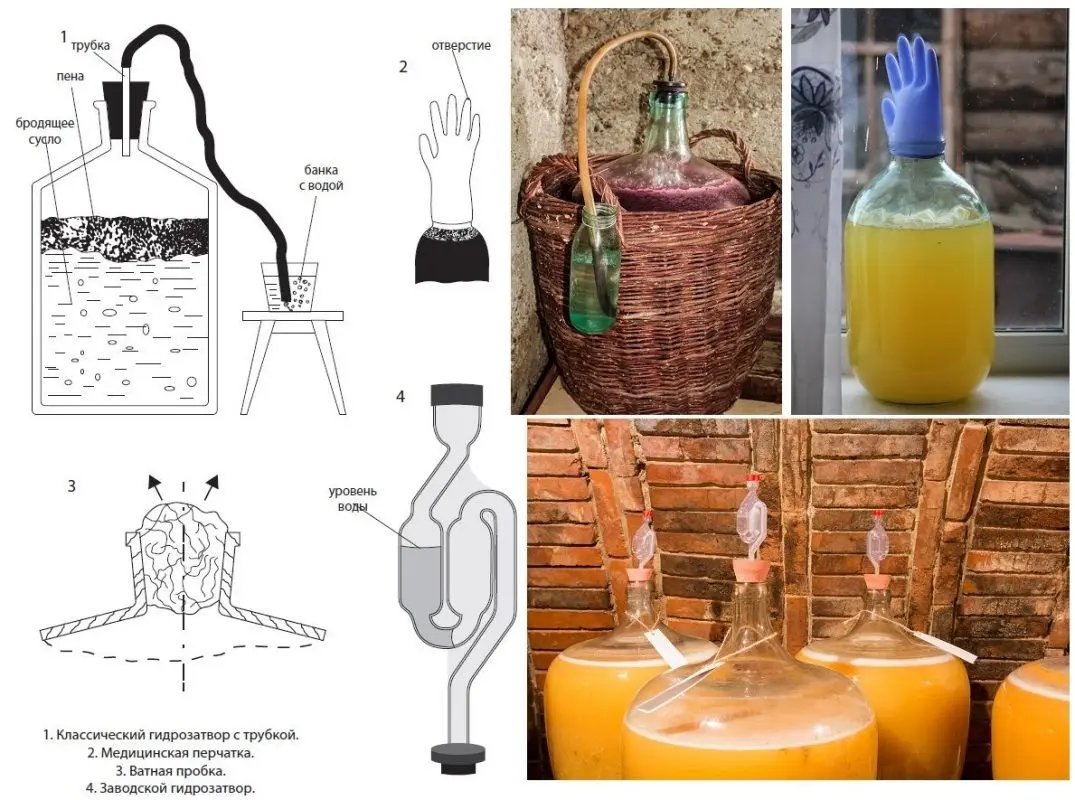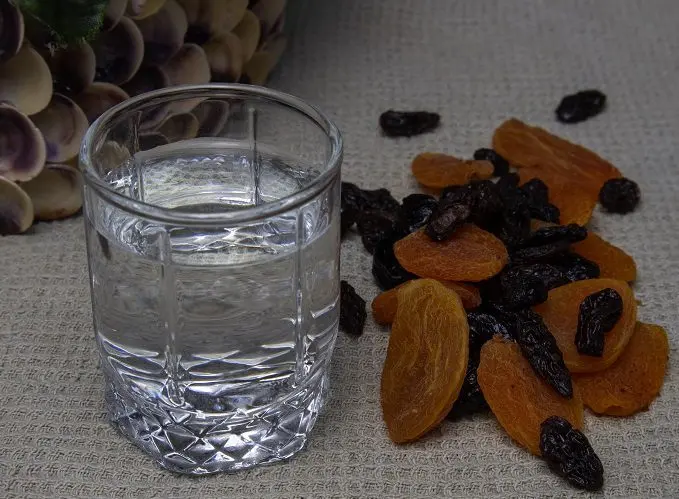Dried fruit moonshine can be used with unnecessary or substandard raw materials that have expired. Even slightly moldy fruits will do (boiling will destroy the mold), but the rotten parts must be cut out to avoid bitterness. If the technology is followed, an aromatic distillate with light fruity notes is obtained.
Theory
Any dried fruits are suitable for making moonshine: prunes, figs, dried apricots, dates, raisins, apples, pears, cherries, etc. In one mash, you can mix different types, getting an original aroma and flavors. The only thing is that prunes give bright smoked notes that stand out strongly in combination with apples and pears.
During the drying process, water evaporates from the pulp, but fructose and dry substances responsible for the taste and aroma of the drink remain. To start fermentation, it is enough to dissolve fructose in water – cook compote, then add baker’s or wine yeast (you can make sourdough). In this case, the total sugar content of the wort should not exceed 20%.
The yield of moonshine from dried fruits depends on the sugar content of the raw material, so it is difficult to predict the values in advance. The sweeter the pulp, the more drink you get in the end. To increase the yield, you can add beet sugar – 1 kg will additionally give 1,1-1,2 liters of moonshine (40%). However, sugar somewhat spoils the fruity flavor, so you have to find a compromise between quantity and quality.
On alcohol, dry or pressed baker’s yeast, dried fruit mash ferments for 4-10 days, but such yeast worsens the aroma. For fruit mash, it is advisable to use store-bought or wild (from the surface of raisins or berries) wine yeast, on which the mash plays longer (25-60 days), but the organoleptic properties of the drink are preserved.
Ingredients:
- dried fruits – 3 kg;
- water – 18 liters and another 4 liters for each kilogram of sugar;
- sugar – 1-3 kg (optional);
- yeast – 100 grams of pressed (20 grams of dry) bakery or wine according to the instructions for the volume of must, or sourdough (3% of the volume);
- citric acid – 10 gram.
Citric acid is needed to stabilize the acidity of the must, which contributes to fermentation, I recommend adding if you add more than 1 kg of sugar.
If necessary, homemade starter from raisins or fresh berries is prepared 3-5 days before working with raw materials.
Dried fruit mash recipe
1. Grind dried fruits with a blender or in any other way. The smaller the pieces, the better the sugars are released, which increases the yield of moonshine.
Attention! It is advisable to first remove the bones. If this is not possible, it is better not to pass the raw materials through a blender, but to leave them as they are, so that the bones remain intact and do not give bitterness.
2. Place dried fruits in a saucepan, add sugar (optional), pour water in a ratio of 1:4 – for 1 kg of raw materials (together with sugar) 4 liters of water. Mix.
3. Bring the mixture to a boil, cook over low heat for 30 minutes, stirring occasionally so that the dried fruits do not stick to the bottom and do not burn.
4. Remove the pan from the heat, add the remaining water and citric acid. Mix.
5. When the wort has cooled down to 28-29°C, add the starter or pre-diluted yeast according to the instructions on the package.
6. Pour the mash into a fermentation tank, leaving at least 25% free space for foam and carbon dioxide. Install a water seal of any design on the neck, you can use a medical glove with a hole in your finger.

7. Put dried fruit mash in a dark place with a temperature of 18-28°C. Depending on the yeast used, after 4-60 days, the water seal will stop releasing gas (the glove will deflate), the mash will no longer taste sweet and will start to taste slightly bitter, and a layer of sediment will appear at the bottom. These signs indicate that fermentation has ended.
Obtaining moonshine from dried fruits
8. Strain the mash that has won back through gauze, squeeze the cake to dryness. If you do not filter, the remaining pulp will burn, ruining the taste of the drink.
9. Overtake the mash for the first time at maximum speed without separation into fractions. Stop collecting the product when the strength in the stream falls below 30%.
10. Measure the strength of the resulting distillate. Calculate the amount of pure alcohol – multiply the volume in liters by the strength in percent and divide by 100.
11. Dilute the drink with water to 18-20 degrees, then make a second distillation. Collect the first 12-15% of the yield from the amount of pure alcohol in a separate container. This harmful, bad-smelling fraction is called “heads” and can only be used for technical purposes.
12. Select the main product (“body”) until the strength in the jet falls below 45%, then finish the distillation or collect the “tail” separately.
13. Dilute the resulting dried fruit moonshine with water to the desired strength (usually 40-45%), pour into glass storage containers.
14. Close hermetically, before tasting, leave for 2-3 days in a dark, cool place to stabilize the taste.










